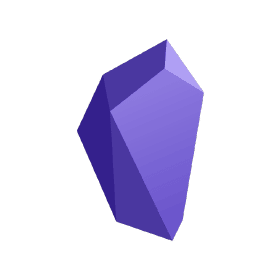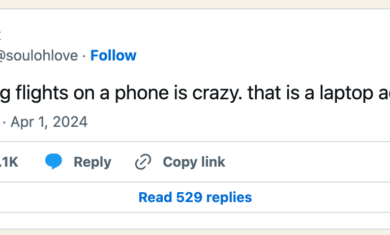Over the past few weeks, I’ve been moving my primary notes database from Roam Research to Obsidian. It’s a move I’ve long known I was going to make, but I’ve been waiting for Obsidian to add a few more features to help me get there. They added them, and now I’ve moved.
It’s similar to when I was using an iPhone back in 2008-2010. I knew I’d switch to Android at some point, as I preferred the direction they were heading, but iPhone was the better choice for a while. Eventually Android filled in the gaps, and here we are.
Roam Research?
If you’re not familiar with Roam, this article I wrote from a few years ago is a good primer. To go a bit further, I’ve created quite a few videos that go deeper. Long story short, both Roam and Obsidian are note-taking tools, not wholly unlike Evernote and others.
At the end of the day, Roam and Obsidian are very similar, but I feel the the future is more bright with Obsidian and I’m glad I made the move.
Sync
The big difference between Roam and Obsidian is that Roam is web-based while Obsidian lives on your computer. I generally prefer web-based tools, but Obsidian has been developing a “sync” tool to keep your content synced between devices, and at this point that tool is finally fantastic. I’ve been using it to connect two Windows desktops, a Windows laptop, a Chromebook (with the Android app), my Android phone, and an iPad, and it’s been flawless keeping it all in sync.
While I plan to produce a bunch of videos about Obsidian in the coming weeks to dig in deeper, here are some initial thoughts on why I moved.
Pros
Privacy
Everything in Obsidian is stored locally, and if you choose to sync it (like I do) it’s all encrypted for protection. Roam does a good job with privacy, but by nature it’s not as secure.
Pricing
Roam is $15/mo, while Obsidian is free. However, the sync feature is $8/mo, so that chews into the gap a bit, but it’s still half the price.
Mobile
This is an area where you’d think Roam should win, being a cloud-based product, but the Obsidian mobile app is far better (particularly if you use Sync to keep it updated with your computer data).
Extensions
Roam has a few third-party browser extensions to help expand it, but they’re not officially supported. On the other hand, Obsidian has a library of nearly 1,000 extensions you can load to help it better fit what you need from a tool like this.
Aliases
This was always a minor annoyance in Roam; if I had a page called “Atlanta Braves” and a page called “Braves”, there was no way to tell the system to treat them as if they were a single page. Obsidian lets you do that.
Date formatting
I use these tools extensively for daily notes, and the date format in Roam was very specific, like “January 1st, 2023”. You had to be super careful with the “st” and such, or you’d end up linking elsewhere. Obsidian uses the more boring (but much more efficient) style of “2023-01-01”, and you can change that up if you want.
Cons
I think Obsidian is a better product now, but that’s not to say it’s perfect. Here are a few areas where it’s been a bit of a struggle.
Not web-based
I’ve covered this above, but I’d still prefer it to be a web-based tool merely for convenience.
Folders
In Roam, your notes are all free-floating in their system. With Obsidian, every note is literally a file on your computer and must be sorted out (or you can leave them all just cluttering things up). I’ve grown to like this, but it’s taken some getting used to.
Extensions Required
I mentioned above that I love Obsidian’s extensions, and I do, but they fill some gaps that Roam had natively. This isn’t a big con, as it allows the tool to be more lightweight yet extensible, but it’s been interesting tracking down the right extensions to make it work for me.
Migration is a pain
There are some tools to help move your notes over, depending on where you’re coming from, but it’s still a huge pain. I had nearly 7,500 notes, and I had to touch almost every one of them to get them sorted into the right place. However, this is also why I decided to move now; if I was going to move eventually, the longer I waited the more notes there’d be to move.
Tag filtering is weak
Roam has fantastic filtering of tags. For example, I can click “#books”, and then “#leadership” and then “#donereading” to quickly filter them down. Obsidian can do that, but it’s much more cumbersome. I expect this to improve over time.
Final thoughts
Overall, these tools are very similar. If you use Roam and you’re happy with it, there is no need to move. However, if you don’t have a solid note-taking system or you’re using something completely different, it might be worth checking out these options to see if they’d make things easier for you.





Hey Mickey! I’m looking for a new organizational system this sounds simple enough but powerful. Two questions if you’d be so kind. Does Obsidian let you take handwritten notes on your Ipad(extension?) and can you share a note/folder with someone so that you can both add stuff?
Good questions!
For handwritten notes, it doesn’t handle them natively, but works well with other solutions. Here is a good conversation of people discussing some options: https://forum.obsidian.md/t/how-to-use-and-link-handwritten-notes/16719/4
For sharing, by nature it’s fairly easy to do since it’s just files on your computer. In my case, I have my Obsidian vault live inside of Google Drive so that I get an automatic backup of everything. You could do it in Drive or Dropbox or whatever, and then share a subfolder of that with others. It’s not as clean as traditional web-based apps, but can work well.
Come join us for our Meetup in a few weeks when we’ll be talking about this stuff, and others on there may have more suggestions for a great tool for you to use. https://www.meetup.com/abrighterweb/events/286771587/